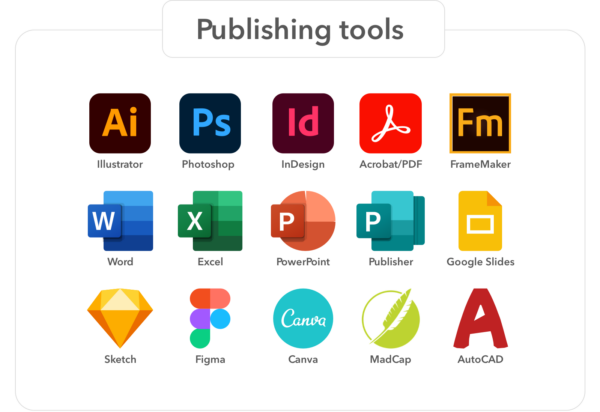
Enterprise solutions
Take your brand global with professional document translation services
There’s a reason why top global companies turn to Acclaro for document translation. Our process includes a dedicated project manager, specialized translators, and in-depth research to give you accurate document translation in any industry. No matter what message you want to get across, we adapt mission-critical documents to support your global business goals.
Document translation in your brand voice
Adapting highly visible documents for the international market requires more than simply translating text from one language to another. We work with you to develop pre-approved style guides and glossaries that bring consistent language and brand positioning to all your marketing materials, corporate communications, technical documentation, and more.
Document translation for basic comprehension
For content that needs to be generally understood, machine translation with a human post-editing step, also known as hybrid translation, may be your best option. This approach can reduce turnaround times and costs for straightforward documents like instructions and technical publications.
Any document
We translate all types of business documents across departments.
- Corporate communications
- HR policies
- Product documentation
- Technical manuals
- Packaging
- Inserts
- Contracts
- Datasheets
- Annual reports
- Customer support articles
- Blogs
- Social media posts
- And more
Leading brands rely on Acclaro



















Supported document formats
We directly support almost any standard document type. No need to cut and paste or mark up what to translate – just send us the native file and let us do the rest. Our most commonly supported tools and formats include:

What our clients say about us.




Expert and scalable multilingual design and production services
Reformatting documents and graphics to international norms and design can be technically challenging and can overburden regular staff when going from English into 5, 10 or more languages. What fits in English, may not in German or Finnish. Hyphenation rules change. Page sizes are different. Images may not be relevant.
No worries, our graphics and production teams have the expertise to coordinate visual components and layout requirements. They can make design recommendations on the equivalent font for your brand in Chinese, take charge of flowing the text from right to left in Arabic, or source locally relevant graphics for your brochure in each of your markets.
Document translation insights
Succeed across cultures in 125+ languages and 300+ language pairs
View all
Power your strategic growth
Go beyond tactical localization with tailored, strategic solutions that resonate locally and drive growth globally.
Get started



